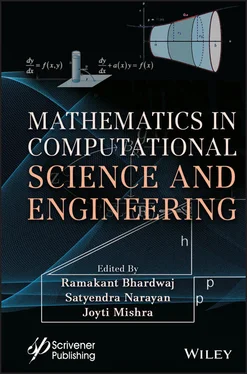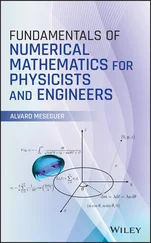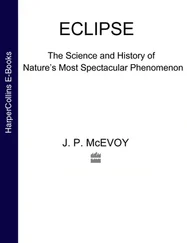Attempts are made herein to explain ill-posed inverse problems and resistivity inversion in the field of electrical geophysics. A detailed mathematical basis for sensitivity analysis and multi-dimensional resistivity inversion has been introduced and discussed. Furthermore, this article has investigated the feasibility of monitoring in-situ processes of EOR/IOR projects and geo-environmental processes with an improved resistivity method. The numerical studies, discussed herein, demonstrate that the subsurface-to-surface electrical resistivity methods have greater promise for monitoring shallow EOR/IOR projects and geo environmental processes. Resistivity monitoring in the case of deeper reservoir structures may be further improved using a borehole-to-borehole resistivity method. It may also be combined with the subsurface-to-surface electrical resistivity methods. A physical format of dynamic adaptive inversion for EOR/IOR monitoring and in-situ processes has also been presented briefly. The sensitivity theory for resistivity monitoring is an important element and it is extensively covered here. Mathematical driven case examples are explained.
Detailed sensitivity analyses of in-situ processes, surface voltage/potential field measurements with fixed electrodes strategy, new approaches to electrical resistivity anomaly enhancement, and mathematically driven theoretical approach for the interpretation of time differenced field resistivity data or potential field data in terms of resistivity changes indicate that the dynamic adaptive inversion method is feasible. Several numerical modelling studies have clearly demonstrated that the electrical resistivity method is well suited for monitoring in-situ processes provided current dipole/excitation source is optimally installed with respect to the zone to be monitored. Sampling potential field with different electrode spacing is an economical and a better choice for EOR/IOR and geo-environmental in-situ processes [32]. Additionally, several subsurface-sampling electrodes may further help in accurately delineating propagation of fluid front and identification of swept anomalous zones.
The physics of steam-front movement in IOR projects as a result of an injection process is different and complex, compared to the movement of a hot-water front. On the other hand, hot-water fronts may show large-scale fingering complexity. IOR projects involving steam injection create higher resistivity contrast, compared to IOR projects involving hot-water injection. The numerical studies [32] for the reservoir model involving a simple scenario of fluid-front propagation suggest that the monitoring of hot-water and steam fronts based on the measurement of differenced response is easier to understand only for a simpler resistivity distribution.
1. TIKHONOV, A., and ARSENIN, V., Solution of Ill-Posed Problems ; V.H. Winston and Sons, Washington, 1978.
2. KABANIKHIN, S.I., Definitions and Examples of Inverse and ill-Posed Problems; J. Inverse Ill-Posed Problems 16, 317–357 DOI 10.1515 / JIIP.2008.069, 2008.
3. NARAYAN, S., Subsurface-to-surface Resistivity Method for Monitoring In Situ Processes Using a Combination of Surface and Subsurface Electrodes; PhD Thesis, Department of Earth Sciences, University of Waterloo, Waterloo, Canada, 1994.
4. BARTEL, C., and SEAVEY, W., Instrumentation for In-situ Coal Gasification; III Electrical Techniques for Remote Monitoring; In Situ , Vol. 2, pp. 247-269, 1978.
5. WILT, M.J., and TSANG, C.F., Monitoring of Surface Contaminants with Borehole/surface Resistivity Measurements; Proc. Surface and Borehole Geophysical Methods in Ground Water Investigation, Fort Worth, TX, February 12 – 14, 1985 .
6. BEVC, D., and MORRISON, H.F., Borehole-to-Surface Electrical Resistivity Monitoring of a Salt Water Injection Experiment; Geophysics , Vol. 56, pp. 769-777, 1991.
7. NARAYAN, S., Vertical Resolution for Two-dimensional Dipole-Dipole Resistivity Inversion; Proceedings of 62 International Annual Meeting of Society of Exploration Geophysicists, New Orleans, USA , EM2.3, pp. 431-434, 1992.
8. DAILY, W., RAMIREZ, A., LABRECQUE, D., and NITAO, J., Electrical Resistivity Tomography of Vadose Water Movement; Water Resource Research , Vol. 28, pp. 1429-1442, 1992.
9. NARAYAN, S., DUSSEAULT, M.B., and NOBES, D.C., Inversion Techniques Applied to Resistivity Inverse Problems; Inverse Problems 10 (1994) 669-686. Printed in the UK.
10. MADSEN, L.M., FIANDACA, G., and AUKEN, E., 3-D Time-domain Spectral Inversion of Resistivity and Full-decay Induced Polarization Data— Full Solution of Poisson’s Equation and Modelling of the Current Waveform; Geophysical Journal International , Volume 223, Issue 3, Pages 2101–2116, 2020. https://doi.org/10.1093/gji/ggaa443.
11. PANG, Y., NIE, L., LIU, B., LIU, Z., WANG N., Multiscale Resistivity Inversion Based on Convolutional Wavelet Transform; Geophysical Journal International , Volume 223, Issue 1, Pages 132–143, 2020. https://doi.org/10.1093/gji/ggaa302.
12. DEVI, A., ISRAIL, M., SINGH, A., GUPTA, P.K., YOGESHWAR, P., TEZKAN, B., Imaging of Groundwater Contamination Using 3D Joint Inversion of Electrical Resistivity Tomography and Radio Magnetotelluric Data: A case Study from Northern India; Near Surface Geophysics , Volume 18, Issue 3, Pages 261-274, 2020. https://doi.org/10.1002/nsg.12092.
13. DAHLIN T., The Development of DC Resistivity Imaging Techniques; Computers & Geosciences Volume 27, 1019–1029, 2001.
14. AL‐SAADI, O. S., SCHMIDT, V., BECKEN, M. and FRITSCH, T., Very‐high‐resolution Electrical Resistivity Imaging of Buried Foundations of a Roman Villa Near Nonnweiler, Germany; Archaeological Prospection , Volume 25, Issue 3, 2018. https://onlinelibrary.wiley.com/doi/abs/10.1002/arp.1703.
15. AHMAD, S.U., Analytical and Iterative Regularization Methods for Nonlinear Ill-Posed Inverse Problems: Applications to Diffuse Optical and Electrical Impedance Tomography; In Partial Fulfillment of the Requirements for the Degree Doctor of Philosophy Mathematics, Clemson University, South Carolina, USA, 2019.
16. CARRIER A., FISCHANGER F., GANCE J., COCCHIARARO G., MORELLI G., and LUPI M., Deep Electrical Resistivity Tomography for the Prospection of Low- to- Medium-Enthalpy Geothermal Resources; Geophysical Journal International , 219(3):2056-2072, 2019.
17. SCHMIDT-HATTENBERGER, C., BERGMANN, P., BÖSING, D., LABITZKE, T., MÖLLER, M., SCHRÖDER, S., WAGNER, F., SCHÜTT, H., Electrical Resistivity Tomography (ERT) for Monitoring of CO2 Migration - from Tool Development to Reservoir Surveillance at the Ketzin pilot Site, Energy Procedia 37, 4268 – 4275, 2013.
18. LIU B., GUO Q., LI S., LIU B., REN Y, PANG, Y., GUO XU, LIU L., and JIANG P., Deep Learning Inversion of Electrical Resistivity Data; IEEE Transactions on Geoscience and Remote Sensing , 2020.
19. NAVEEN KUMAR T., RAMA RAO P., and NAGANJANEYULU K., Electrical Resistivity Imaging (ERI) Using Multi-electrodes for Studying Subsurface Formations in Cauvery Plains; Advances in Applied Science Research , 6(5): 47-53, 2015.
20. MAJA BRIŠKI M., STROJ A., KOSOVI´I., and BOROVI S., Characterization of Aquifers in Metamorphic Rocks by Combined Use of Electrical Resistivity Tomography and Monitoring of Spring Hydrodynamics; Geosciences , 10, 137, 2020. doi:10.3390/geosciences10040137.
Читать дальше












